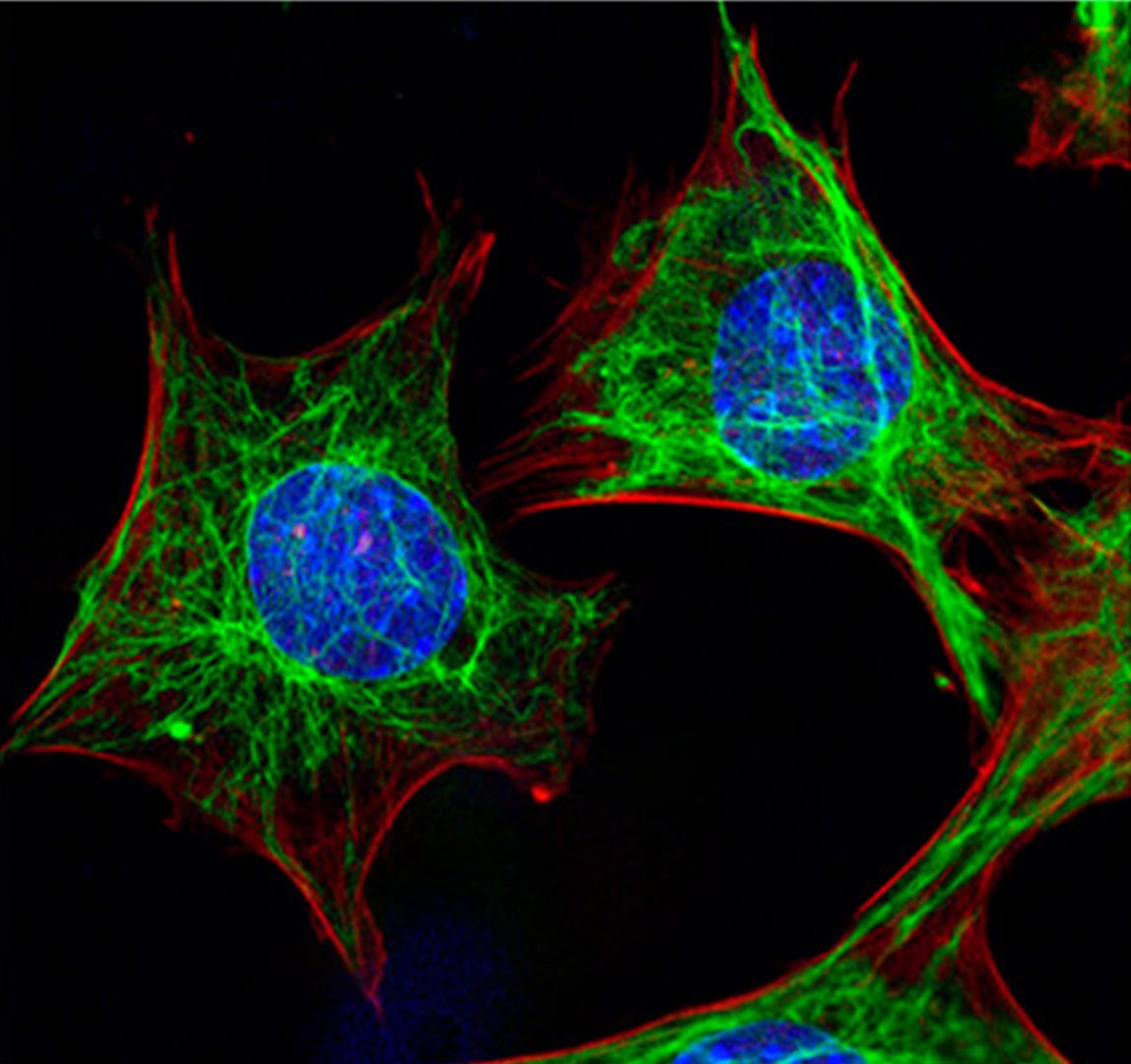
A fluorescent optical micrograph showing how vimentin networks (green) respond to compressive loads, and protect the cell nucleus from mechanical damage
Cells and tissues are subjected to external mechanical stresses in the body, including compressive loads, pressure gradients, and shear. This study shows that single cells become harder when compressed and that the parts inside the cells that make them strong (called the cytoskeleton) change when they are compressed. Some cells, like fibroblasts, become harder when subjected to moderate compression. However, this does not happen if a part of the cytoskeleton called vimentin is removed. This is because vimentin networks become harder when compressed or extended. This is explained using a theoretical model to based on the flexibility of vimentin filaments and their surface charge, which resists volume changes of the network under compression.
These results help us understand how cells react to forces and show that intermediate filaments such as vimentin play a central role in how cells respond to compression, protecting the cell’s nucleus from mechanical damage.
(Pogoda, K.; … Grishchuk, E. … Janmey, P.A.; Unique Role of Vimentin Networks in Compression Stiffening of Cells and Protection of Nuclei from Compressive Stress. Nano Letters 2022, 22 (12), 4725-4732. DOI: 10.1021/acs.nanolett.2c00736.
